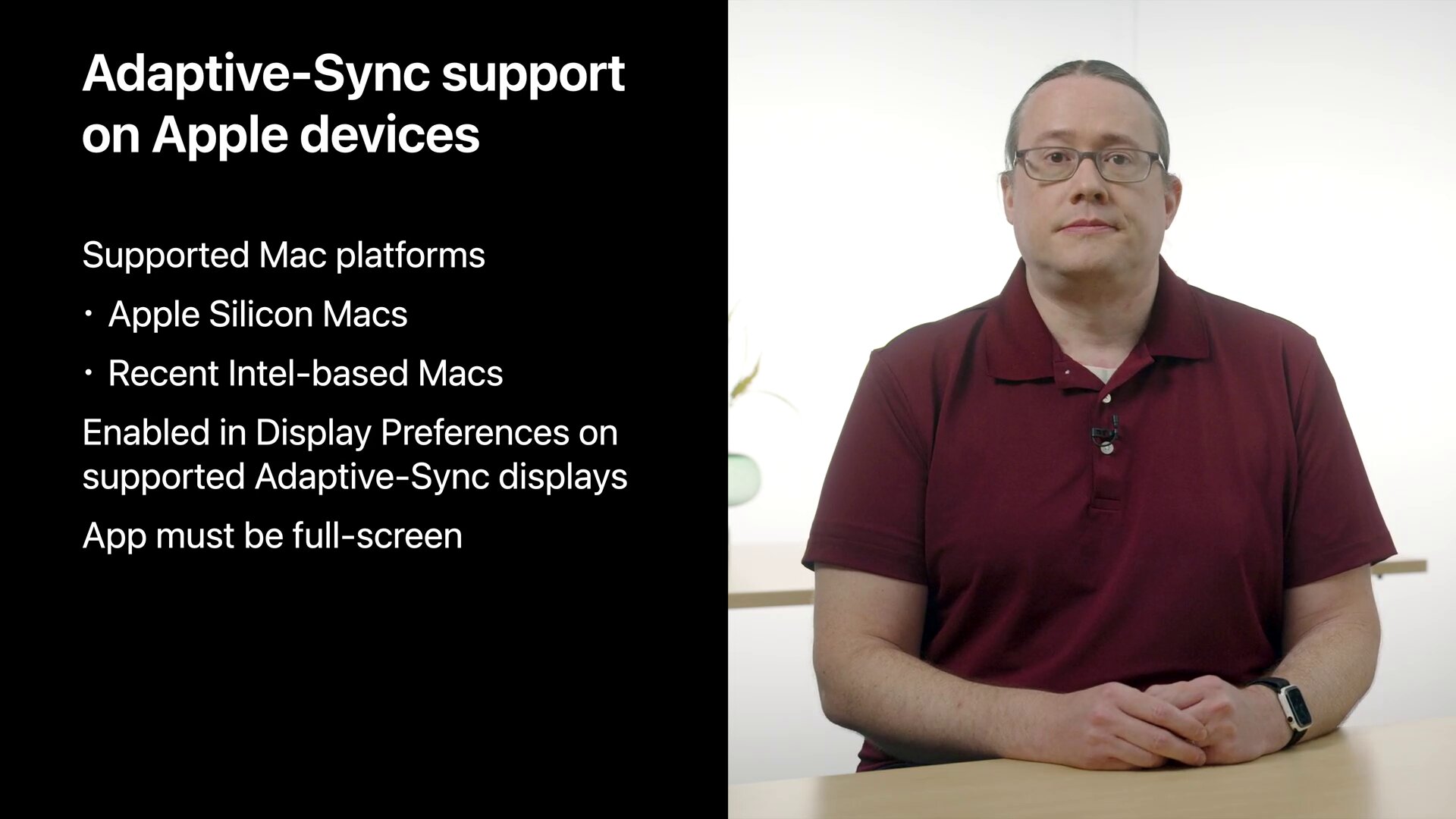So far not announced as part of the innovations for macOS Monterey, Apple has announced the support of Adaptive-Sync on external screens in a WWDC session. Current Macs still run with a static refresh rate.
Adaptive-Sync is the name of the standard introduced by VESA for the first time from DisplayPort 1.2a in 2014 for controlling screens with a variable refresh rate (VRR, Variable Refresh Rate). There are various implementations on the market, including FreeSync from AMD or the proprietary Nvidia G-Sync.
Apple has so far only used Adaptive-Sync on the ProMotion displays of the iPad Pro, all other screens from the manufacturer, such as the iPhone, other iPads, MacBook and iMac, run with a static refresh rate of 60 Hz. MacOS Monterey, which was introduced at the beginning of the week, supports Adaptive -Sync now also on a Mac with an external display, provided that this in turn offers Adaptive-Sync.
Adaptive-Sync on Apple-Silicon- and Intel Macs
In detail, Adaptive-Sync can be used on any Mac with Apple Silicon, i.e. the current MacBook Air, MacBook Pro with two Thunderbolt ports, Mac mini and iMac, as well as on the latest Macs with Intel processors. In order for Adaptive-Sync to be used on the respective system, this must be activated under macOS Monterey in the screen settings of the respective Adaptive-Sync monitor. In addition, Adaptive-Sync can only be used for applications in full screen mode.

Developer beta since Tuesday, public beta in July
Developers registered with Apple have had this since Tuesday evening Week access to a first beta of macOS Monterey, a first public beta for everyone is planned for July. The release of the new version of the Mac operating system is planned for “later in the year”. The following Macs and MacBooks should receive the update free of charge:
- iMac (Late 2015 and later)
- Mac Pro (Late 2013 and later)
- iMac Pro (2017 and later)
- Mac mini (Late 2014 and later)
- MacBook Air (Early 2015 and later)
- MacBook (Early 2016 and later)
- MacBook Pro (Early 2015 and later)
Maximum 60 Hz in power-saving mode of iPadOS 15
< p class = "p text-width"> There is a small adjustment for Adaptive-Sync under iPadOS 15. The displays of all iPad Pros have been offering a variable refresh rate of 24 to 120 Hz since 2017. Those who do not want to use this feature called ProMotion could always set a maximum of 60 Hz under “Settings, Accessibility, Movement”. IPadOS can also set a limit of 60 Hz itself when there is a lot of thermal stress. New for iPadOS 15 is a power-saving mode similar to that of the iPhone, which also sets the maximum to 60 Hz.

